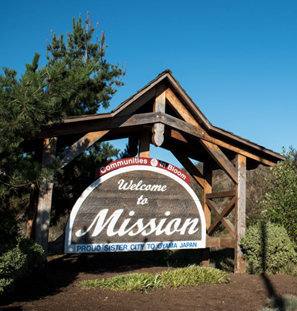In an era where sustainability takes center stage and the health of our planet is in focus, a promising solution is emerging to safeguard our forests: community forestry.
Communities are taking an active role in nurturing the woodlands that surround them. In this transformative movement, Canada has a unique opportunity to lead the way in redefining forestry, harmonizing local needs, ecological care and economic progress. This shift towards community forestry is gaining momentum as it converges with the traditional forestry industry, promising a profound transformation in forest management.
Canada’s vast 347 million-hectare woodlands play a pivotal role in ecology and economy. While industrial forestry has historically driven economic growth, it has also contributed to habitat and biodiversity loss and escalated carbon emissions.
Understanding Community Forestry
Community forestry is not just about managing forests — it’s about managing them together. Involving the people who live near woodlands in forest management fosters a sense of responsibility and ownership. Community forestry offers a multifaceted approach, enhancing forest management and ecological well-being. By involving local communities as land stewards, biodiversity is conserved through decisions that acknowledge complex species interactions, seasonal cycles and migration paths.
Additionally, community forestry acts as a robust ally in climate change mitigation, with trees absorbing CO2 and functioning as carbon sinks, leading to cleaner air and a healthier environment. This practice not only benefits the environment but also promotes socioeconomic success by creating employment opportunities, generating revenue from ecotourism, sustainable wood harvesting and improving living standards.
Local participation in community forestry is crucial for preserving cultural heritage, such as ancient rituals and medicinal plant usage. It also contributes to economic diversification through initiatives like handicrafts, ecotourism and value-added wood products, reducing reliance on a single resource.
A New Blueprint: Principles of Community Forestry
A fundamental principle that underpins the success of community forestry is collaborative decision-making, including local citizens, Indigenous populations, experts and authorities. By fostering this inclusive approach, community forestry projects create a tapestry of involved voices, weaving together a culture of shared responsibility and accountability.
By distributing financial gains and social infrastructure fairly among all stakeholders, community forestry projects also foster a deep sense of attachment and motivation among community members. This sustainable approach places a strong emphasis on responsible harvesting, reforestation and environmental protection. It delicately balances the utilization of forest resources with conservation, ensuring the forests’ robust health and resilience.
Navigating Challenges
Community forestry ensures the sustainable management of forest resources and empowers local communities. Yet, like any worthwhile initiative, it faces challenges.
Community forestry faces challenges like resource distribution conflicts, technical gaps and market dynamics. However, these can be overcome by empowering communities, resolving disputes through dialogue and forming partnerships with organizations and governments.
A multifaceted strategy is needed, including capacity-building, conflict resolution, dialogue and negotiation. Collaboration with non-governmental organizations and government agencies provides technical expertise, finance and legal advice. Partnerships promote knowledge exchange, training and resource sharing. Investing in these strategies increases resilience against resource conflicts, capacity shortages and external pressures, protecting the environment and empowering communities to be sustainable stewards.
Community forestry isn’t just about local change — it’s about global impact. It aligns with the United Nations Sustainable Development Goals, nurturing biodiversity, mitigating climate change, promoting equitable economic growth and fostering inclusivity. However, for the community to truly flourish, the role of policy cannot be overlooked. Governments can empower communities by decentralizing decision-making, honouring traditional knowledge, and fostering technical support. This synergy shapes a narrative where communities become champions of change, fostering a world where environmental integrity and societal well-being walk hand in hand.
Community Forestry in British Columbia: Mission Tree Farm

British Columbia is fostering community forestry through a unique partnership between local communities, Indigenous groups and government bodies. This approach not only preserves forests but also revitalizes economies and safeguards cultures. The integration of traditional wisdom, ecological understanding and economic aspirations promotes sustainable growth, demonstrating the importance of inclusivity in a thriving ecosystem.
In the heart of British Columbia, Mission Tree Farm bridges the gap between community and industry. What began as a modest endeavour has blossomed into a flourishing enterprise where responsible forestry practices intertwine with industrial efficiency. Partnerships with local mills and businesses cultivate timber production while staying rooted in stringent environmental standards.
A living testament to the compatibility of responsible practices with industrial demands, Mission Tree Farm demonstrates that the synergy of stewardship and enterprise can redefine our approach to forest management.

